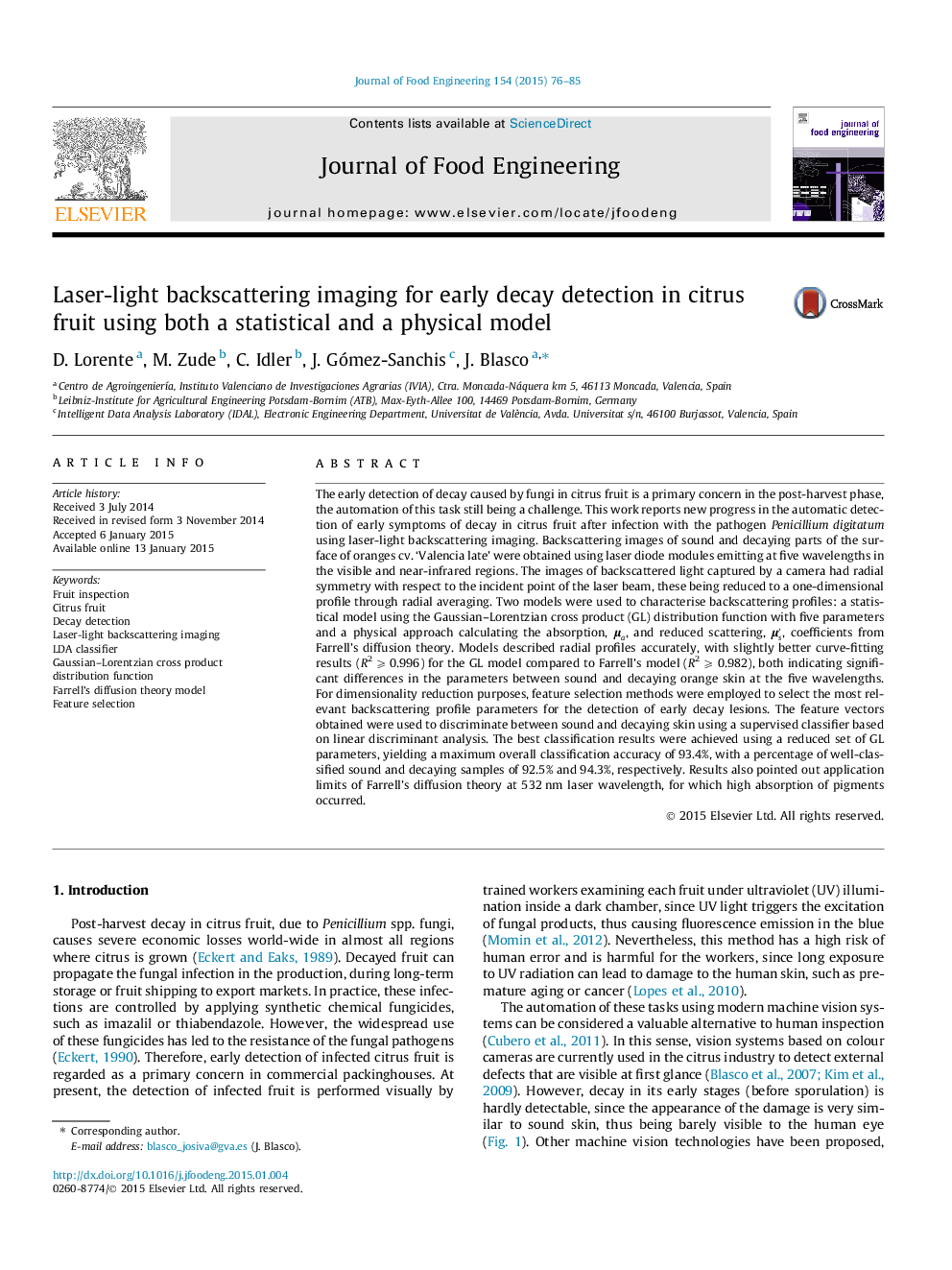| کد مقاله | کد نشریه | سال انتشار | مقاله انگلیسی | نسخه تمام متن |
|---|---|---|---|---|
| 222988 | 464320 | 2015 | 10 صفحه PDF | دانلود رایگان |
• Backscattering imaging for the automatic detection of decay lesions in citrus fruit.
• Comparison of a statistical and a physical profile model for first time.
• Statistical model using the GL function and physical model based on diffusion theory.
• Nine feature selection methods to select the most relevant profile parameters.
• Good results of decay detection for both profile models.
The early detection of decay caused by fungi in citrus fruit is a primary concern in the post-harvest phase, the automation of this task still being a challenge. This work reports new progress in the automatic detection of early symptoms of decay in citrus fruit after infection with the pathogen Penicillium digitatum using laser-light backscattering imaging. Backscattering images of sound and decaying parts of the surface of oranges cv. ‘Valencia late’ were obtained using laser diode modules emitting at five wavelengths in the visible and near-infrared regions. The images of backscattered light captured by a camera had radial symmetry with respect to the incident point of the laser beam, these being reduced to a one-dimensional profile through radial averaging. Two models were used to characterise backscattering profiles: a statistical model using the Gaussian–Lorentzian cross product (GL) distribution function with five parameters and a physical approach calculating the absorption, μaμa, and reduced scattering, μs′, coefficients from Farrell’s diffusion theory. Models described radial profiles accurately, with slightly better curve-fitting results (R2 ⩾ 0.996) for the GL model compared to Farrell’s model (R2 ⩾ 0.982), both indicating significant differences in the parameters between sound and decaying orange skin at the five wavelengths. For dimensionality reduction purposes, feature selection methods were employed to select the most relevant backscattering profile parameters for the detection of early decay lesions. The feature vectors obtained were used to discriminate between sound and decaying skin using a supervised classifier based on linear discriminant analysis. The best classification results were achieved using a reduced set of GL parameters, yielding a maximum overall classification accuracy of 93.4%, with a percentage of well-classified sound and decaying samples of 92.5% and 94.3%, respectively. Results also pointed out application limits of Farrell’s diffusion theory at 532 nm laser wavelength, for which high absorption of pigments occurred.
Journal: Journal of Food Engineering - Volume 154, June 2015, Pages 76–85
